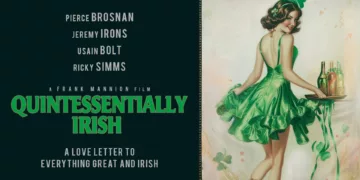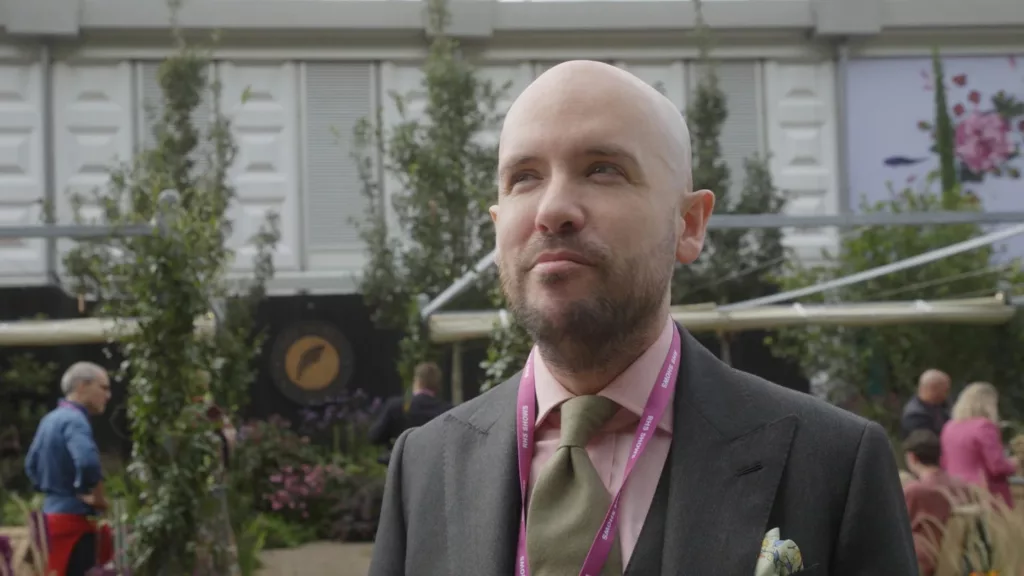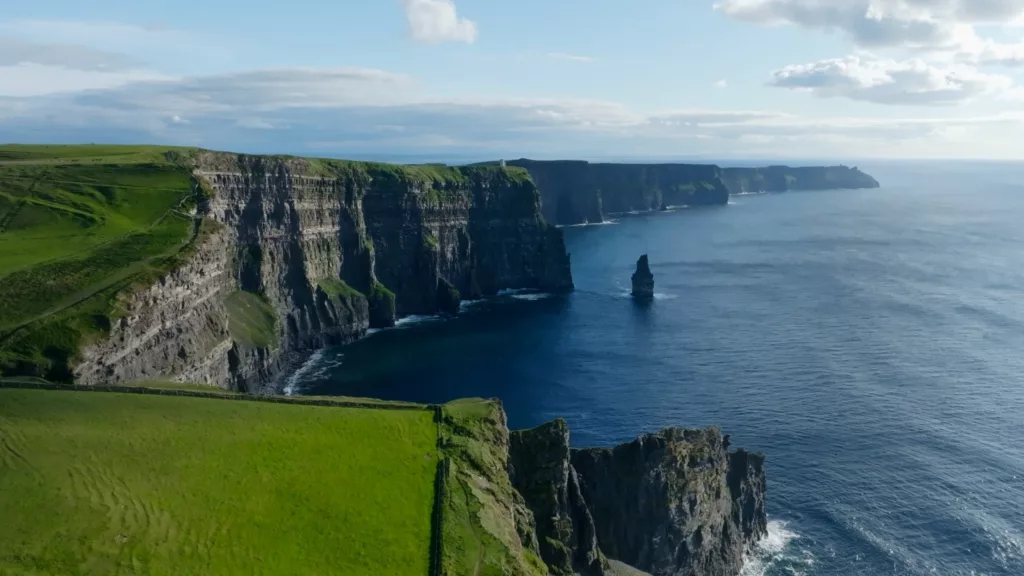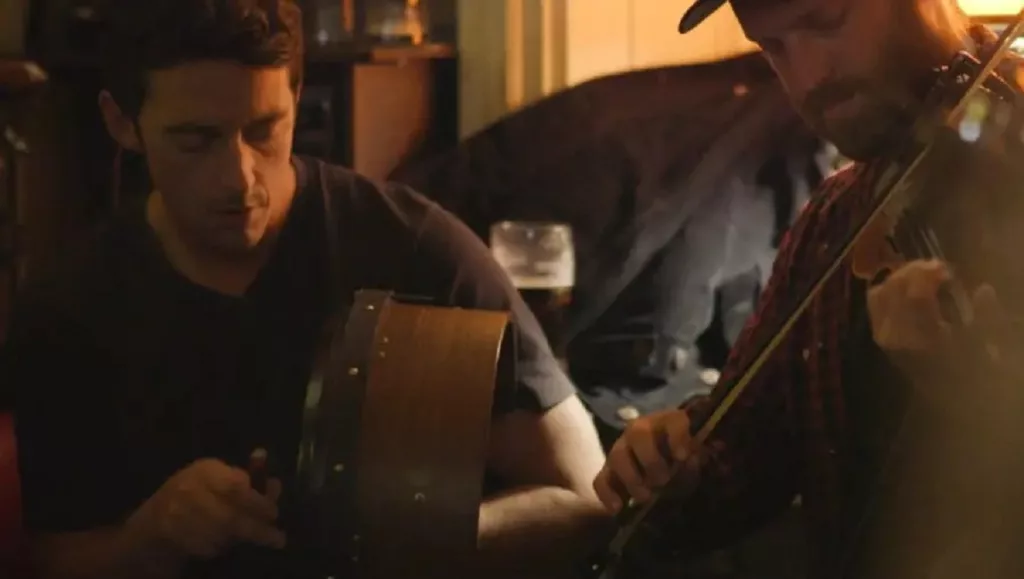Frank Mannion’s documentary Quintessentially Irish sets out to explore what it means to be Irish through conversations with cultural figures and those connected to the Emerald Isle. As an Irish filmmaker, Mannion seems poised to offer intimate insights, yet managing such a broad subject over nearly two hours proves a challenge.
We learn Mannion previously examined British identity, an undertaking perhaps better served by traditions and institutions centralized in London. Irish culture, in contrast, stems from diverse roots and regional differences. His all-encompassing approach risks superficiality where depth could offer understanding.
Nonetheless, Mannion secures interviews with luminaries like President Michael D. Higgins and Pierce Brosnan, granting windows into the Irish soul. Emma Dabiri brings a needed perspective, discussing prejudice faced by Dublin’s lone black student. And Jeremy Irons, now calling Ireland home, conveys genuine affection for the anarchic spirit within her people.
With Ireland’s history including famine, emigration, and conflict, fully capturing the national character requires acknowledging both light and dark. While Mannion shares entertaining anecdotes, some segments feel removed from his objective. By exploring identity through varied yet specific voices, he could have achieved his aim with greater focus in less time.
As it stands, Quintessentially Irish provides flickers of insight into the complexity of Irishness but struggles to shine a coherent light. Further editing may have revealed still more of the heart of a country and culture profoundly woven into the tapestry of the world.
Capturing the Complexities of Irish Culture
Quintessentially Irish tackles the immense challenge of defining a national identity through a wide-ranging mix of voices. Filmmaker Frank Mannion structures his documentary into several loose segments, aiming to showcase Ireland’s richness through the lens of history, the arts, and global influence.
We meet some truly engaging subjects along the way. Pierce Brosnan offers heartfelt reflections on his upbringing in Ireland and rise to fame. His natural charisma lights up the screen. Also insightful are President Michael D. Higgins’ scholarly perspectives and Emma Dabiri’s moving account of facing prejudice as a child in Dublin. Both expand our understanding of Ireland’s diversity and enduring spirit.
Other interviews provide snapshots of Irish heritage but lack the same depth. Jeremy Irons expresses fondness for his adoptive homeland yet sparks no deeper discussion. Figures like Usain Bolt and Joe Biden connect to Ireland through distant family ties alone. While they have friendly faces, their segments feel detached from the film’s stated goal.
Mannion works to showcase Ireland’s imprint on industries from film to business to wine. But by flitting between so many topics, he risks glossing over significant details. The country’s painful past receives only a only a brief acknowledgement. More focused segments with historians or authors may have better balanced Ireland’s complex realities.
Overall, the documentary attempts an enormously ambitious task. At their best, conversations shine new light on Irish culture’s intricacies and global reach. But a tighter structure profiling fewer voices with greater nuance could have more powerfully captured what remains quintessentially elusive—the heart and soul of Ireland itself.
Embracing Complexity in Irish Identity
Quintessentially Irish highlights how difficult it can be to define a national character. Through diverse voices, moments of real understanding emerge among lighter discussions.
Emma Dabiri, now a renowned broadcaster, shares movingly about facing outsider status in her Dublin childhood. As a mixed-race girl in a still-homogenous Ireland, subtle prejudice left deep marks. Her account shows identity derives from myriad experiences versus simplistic labels.
Others indicate Irishness spans generations across borders. President Higgins intellectually establishes modern Ireland’s confidence. Pierce Brosnan embraces family roots, though fame found him in America. Their comments accept identity as a journey, not fixed coordinates.
Viewers gain nuanced appreciation for Ireland’s global imprint via emigration. We meet descendants fiercely proud of their heritage, though personally distinct from their lives “back home.” Diaspora underscores identity as a web, not a single strand.
Yet for a documentary exploring “quintessential” traits, some parts feel shallow. Discussing Irish influence through sports stars like Usain Bolt lacks depth. Broader historical forces shaping the national story also receive a brief mention alone.
Touching further on factors impacting Irish identity could have strengthened the work. More substantive looks at the Troubles’ painful legacy or today’s debates on a united Ireland may have balanced celebratory tones. Delving deeper into cultural life through artists and intellectuals could also offer perspective on the complexity of Irishness itself.
At its best, the film recognizes no simple answers. An enriched focus on history and more nuanced profiles might have better captured the diversity underlying a character no label can contain.
Wandering Naturally in Irish Identity
Quintessentially Irish explores its theme through an enjoyable mix of guests. However, some may feel the documentary lacks a steady direction at times.
The film jumps quickly between topics, which leads to a wandering feel. The lengthy opening profile of Pierce Brosnan sets an odd tone. While his charm brings smiles, it does little to contextualize the program’s examination of Irishness.
Later sections also seem far from the core subject. The segment on pronouncing Irish names provides amusement. Yet it feels disconnected from insights into the weightier aspects of cultural identity.
Moments like these risk leaving audiences feeling adrift in the film’s flow. Juggling so many details, it fails to linger long enough to probe any one perspective in depth.
True, a certain rambling nature relates to the elusive nature of identifying a culture. But a stronger editorial hand could have targeted conversations more purposefully. A tighter focus would serve to consistently draw thoughtful consideration to Ireland’s character.
Of course, any work striving to capture a national spirit walks a winding road. Perhaps Mannion prefers a looser impression of Irish identity’s rich complexities over a rigid, systematic treatment. In its best moments, the film warmly reflects how no simple answers define a land and people so profoundly shaped by journey.
Embracing Erin: Comparing Frank Mannion’s Cinematic Odes to Culture
With Quintessentially Irish, Frank Mannion aimed to capture the spirit of a land, as his earlier film did for Britain. But where the director previously found cohesion, this effort struggles at times to bring focus.
Mannion’s 2022 documentary on Britishness drew praise for its deft handling of a complex subject. It weaved history with contemporary views through a consistent lens, exploring traditions and ceremonies to reveal threads of a shared national character. Strong editorial guidance guided journeys to varied locales and social worlds.
Quintessentially Irish lacks this through line. Mannion draws from rich source material in Ireland’s artists, entrepreneurs, and leaders. Yet by jumping hastily between them, it risks leaving some fragments merely floating unrelatedly.
The initial Pierce Brosnan profile sets an odd pace rather than an introduction. Later, swapping quickly between tech innovators and horse racing offers tasty cultural tidbits but connects them too loosely. Substantial subjects like The Troubles enter almost as afterthoughts.
By contrast, portraying Britain coherently highlighted that culture’s pageantry and institutions, which quietly shaped national identity. But Ireland’s essence proves more elusive and nuanced. With no clear framework for group perspectives, the film struggles at times to probe deeply.
At its best, Mannion’s documentary reflects how no single definition encapsulates a place and people so profoundly shaped by adversity and movement. In embracing Erin’s complexity over easy answers, it breathes life into the lively, wandering spirit of this green land and the global Irish community.
Capturing the Irish Spirit
Frank Mannion’s documentary gets many things right about representing modern Ireland. While not without flaws, Quintessentially Irish showcases compelling voices that bring the diverse essence of Irish culture to life.
Several interviewees offer keen outside perspectives that feel authentic. Jeremy Irons, for example, speaks movingly as an Englishman now at home in Ireland. His appreciation reflects the island’s ability to embrace outsiders as its own.
President Higgins also offers rich insight as an Irish citizen. Learning about policies that fostered the film industry left me wanting to know more about this history. From humble beginnings, Ireland has emerged as a global creative hub—a story of national rebirth.
We also glimpse the arts that have shaped the Irish soul for generations. From poetic voices like Joyce to traditions of dance and music, Figures like Emma Dabiri share movingly how the cultural roots of their identity took form. These threads capture spirit over simple stereotypes.
Though brief, touching on struggles like the Troubles feels important. As does acknowledging Ireland’s mass diaspora forced abroad by circumstances out of their control. These harder moments give fuller context to understanding the people.
At its best, the documentary conveys Ireland’s capacity for pride, defiance, and joy despite adversity. It leaves you with a sense of the charming, complex ambiguity at Ireland’s core—a place and culture impossible to define in single strokes. Mannion succeeds in sparking curiosity to discover more dimensions of this intriguing island and its worldwide community.
Exploring the Irish Soul
While Quintessentially Irish takes on an expansive view of modern Irish identity, its scope at times seems unfocused. Moving between compelling voices and random tangents, the documentary struggles to tell a cohesive story. But in its best moments, Frank Mannion’s film genuinely captures the lively spirit of the Irish people.
Through figures like Emma Dabiri and Michael Higgins, we glimpse the cultural richness and history that have shaped the nation. Contributors like Jeremy Irons offer outsider views that feel authentically smitten with Ireland’s charm. Their contributions stick with you as memorable highlights.
However, a tighter edit may have allowed certain threads to play out more meaningfully. Following fewer paths in greater depth could have offered richer insight. As is, the diverse mix, though ambitious, leaves some moments underdeveloped.
Yet, despite the gaps, the documentary stirred my curiosity. It leaves one still wondering about Ireland’s vibrant arts and the communities forged worldwide from its shores. Its people remain an intriguing mosaic that is impossible to pin down. And like the best travelogues, this work kindles intrigue to discover more unexpected dimensions of Irish identity for myself.
While not a perfect documentary, Mannion achieves his aim of sparking curiosity. His film underscores why Ireland’s soul remains endlessly fascinating to explore, whether near or far. It conveys the essence of a place and people that embrace complexity with pride, humor, and an unyielding spirit—living reminders of all humanity’s capacity for beauty despite life’s hardest parts. Some trim may have strengthened the cuts, but the Irish character remains quite a captivating subject on any canvas.
The Review
Quintessentially Irish
While Quintessentially Irish could have benefited from a more focused edit, Frank Mannion succeeds in his goal of sparking curiosity about modern Irish identity. At its best, the documentary showcases compelling voices that offer genuine glimpses into Ireland's rich cultural spirit. Its rambling nature may frustrate, yet the film kindles interest in continued exploration of this fascinating island and its worldwide community.
PROS
- Features engaging interviews that give flavor to Irish culture, history, and the arts
- Captures the charm and pride of Irish identity through contributors
- Sparks curiosity about modern Ireland and its global diaspora
CONS
- Unfocused structure jumps between too many topics without depth
- Overly long runtime dilutes impact through unnecessary tangents
- Fails to sufficiently address challenges like The Troubles






















































Discussion about this post